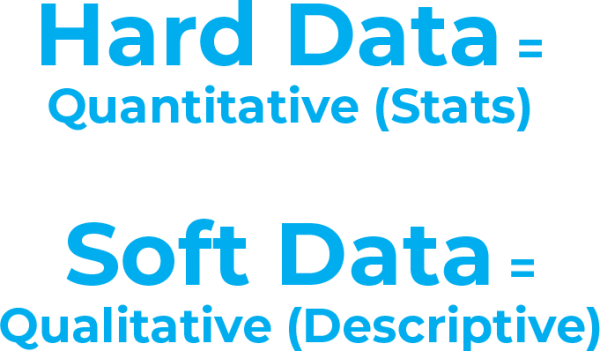Any new business plan starts by assessing the environment and the opportunities ahead. What’s in store for multifamily marketing for the remainder of this year? What goals can we set? How can we achieve them?
We surveyed the digital multifamily marketing environment and made predictions for the remainder of this year and beyond.
We’ve settled on the four multifamily marketing trends we project to have the most impact and potential this year:

1. Customer Storytelling
Oftentimes, it can be hard to develop a multifamily brand story, especially if our product or service is not outwardly life-changing.
What’s your multifamily brand story? And by that, we mean, what makes your multifamily brand human? How do you care for your customers and your community?
For some organizations, their brand story is an easy one to tell. For example, TOMS donates a pair of shoes for every pair sold, and St. Jude’s helps children fight cancer every day. It is easy to see how these organizations have an impact on people’s lives.
But what about the rest of us? The bankers, the chefs, the designers, the agency owners, and so on … What’s our mark on the community? How do we care?
Oftentimes, it can be hard to develop a multifamily brand story, especially if our product or service is not outwardly life-changing. That’s why we love this example from Airbnb:
Airbnb is all about the customer, which makes obvious sense considering the customer (both hosts and guests) is the brand. The company does not manage or own the properties on its platform; rather, the company offers a platform for customers to book or promote properties, meals, experiences, and more.
Airbnb knows that if no one is using the platform, the company does not have a product. This is why it’s critical for the company to utilize customer storytelling to build its brand. In fact, the platform has an entire section titled “Stories From the Airbnb Community” for this very purpose.
Positioning the customer at the center of its brand and letting the customers be the brand is essential to Airbnb’s philosophy and identity. The company is literally built on the power of customer storytelling.

Mobilize your advocates and go beyond the standard
There is a quote we often recite in our office and try to remember in our multifamily marketing efforts, “People don’t buy what you do, but rather why you do it.” 2021 is the year to mobilize your advocates — that is, your loyalists and your enthusiasts.
What role does your multifamily brand play in people’s lives? Create a forum for your customers to tell their brand story (i.e., what they love about your brand). Livestreaming and takeovers on Instagram, Facebook, and TikTok will continue to be the breakout social platforms for customer storytelling. Go beyond the standard “Post a photo.” Challenge your advocates.
It all goes back to this: how do your customers connect with your brand? Now, how can we leverage those connections to tell our multifamily brand story?
2. New Data Collaborations
Another significant digital multifamily marketing trend to keep on your watchlist is new data collaborations — that is, how “hard data” will no longer rule the roost. It’s going to be a year of collaboration and teamwork. Hard and soft data, big and small data, quantitative and qualitative … no matter how you look at it, marketers must use both to find digital multifamily marketing success.
Hard and soft data
Let’s start by differentiating between the two. Hard data is quantitative in nature, meaning that it can be precisely measured. It’s usually collected on a large scale, which allows us to quantify and organize the data we collect. With hard data insights, I know that 60% of my customer base is female, 32% is Hispanic, and 10% make $200,000+ each year, etc. Hard data tells me that 40% of my web traffic is coming from a single blog post. Or that 72% of my online customers are finding me through social media.

On the other hand, soft data (or qualitative data) is descriptive, intangible, and hard to measure. It also goes much deeper than hard data. Soft data is often gathered from interviews, observations, or from spending time with people. While hard data tells me that 60% of my customer base is female, soft data focuses on just a few of my female customers in an effort to understand:
- How do they use technology throughout the day?
- What are their perceptions of my brand?
- Who do they trust most for product recommendations?
If hard data tells me that one of my blog posts is driving 40% of my web traffic, soft data tells me why that blog is effective.
Nail your value proposition
Traditionally, multifamily marketing and advertising have been a hard-data world. Recently, however, there’s increasing awareness of the value of soft data. Without soft data insights, we will never really know our customers or our target audience. We will never know what is important to them, what they do on the weekends, or what keeps them up at night. Why do these things matter?
Because without these soft data insights, we do not truly know our value proposition. We do not know what problems we are trying to solve for our target audience. We do not know the best way to appeal or intercept them — what kind of technology, what message?
Cue your resident buyer personas …
In the section above, we talked about brand advocacy — that is, when customers voluntarily and excitedly recommend your brand to others (AKA the multifamily marketing mecca). To get there, you have to know what makes your customers tick.
One way to do this is through resident buyer personas. A persona is a semi-fictional character you create that epitomizes your customer. It captures their demographics, behaviors, and motivations. Not only does it summarize your target market, but it gives you “someone” tangible to market to. A resident buyer persona starts with hard data, then adds the soft data insights.

Role Play: Luxury Apartment
Let’s pretend you are the multifamily marketing coordinator for a luxury apartment complex in Uptown Dallas. You are trying to determine how to attract more young professionals, so you hold a small focus group with a few of your current residents. You ask them questions that aim to understand the “why.” Why did they choose this apartment? Why did they renew their lease? What’s the value of living here for them?
You then emerge with a few character profiles that read something like this …

Chris is 28 years old, single, and living in a one-bedroom apartment in Uptown Dallas. He’s originally from Chicago, but he stayed in Dallas after college for a job opportunity.
By day, he’s a financial analyst; however, every evening, you can find him at the CrossFit gym. He enjoys the camaraderie of CrossFit, and he frequents The Pickled Sub, a sandwich shop two blocks east. He always knew he wanted to live in Uptown, where he can walk to nearby grocery stores and restaurants.
His life revolves around Champ, his active three-year-old dog, who he likes to take out for runs. At his current location, the Katy Trail is 100 yards out the back door and the dog groomer is two blocks north. His dog sheds, yet he’s found these hardwood floors easier to keep clean than the carpet in his previous apartment. He’s gotten to know fellow pet owners throughout the apartment complex, with whom he enjoys the small talk that surrounds pet-owner responsibilities.
BOOM. You just got the angle for your new multifamily marketing materials. Remember that Chris does not actually exist. This persona was created from several conversations with residents. Hard data found that 34% of the residents were single, male, pet owners. Soft data revealed why they live there, and how you can continue to attract them. A persona gives you someone tangible to market to.
It’s teamwork, you see, between hard and soft data, big and small, quantitative and qualitative. We will see a lot more data collaboration this year. Why? Because it produces killer insights.
Want to learn more about the importance of building your buyer persona, including free resources like checklists, guides, quizzes, and more to help you do so? Check out our list of free buyer persona resources to help you get started!
3. Multifamily Inbound Marketing
This term, inbound multifamily marketing, has become more prevalent in the last year or so. Inbound multifamily marketing methods focus on content creation (e.g., blogging) as a way to attract your target audience and establish yourself as a resource within your industry or community. In turn, regular blogging serves to boost your multifamily SEO and drive media interest. It also provides points of engagement on social media.
Inbound multifamily marketing is a pull method rather than the push method of traditional apartment advertising. The prevalence of inbound multifamily marketing has necessarily given rise to a new trend: ongoing content creation.

New kids on the block
No longer is blogging merely a novelty multifamily marketing tactic. Instead, blogging has become essential to businesses in the digital age. (Just ask us how our last few clients found us!)
As the journalistic landscape evolves, we will see traditional writers and editors start to fill demand on the creative side. Businesses need more than just “a writer” these days. They need an editorial vision. They need someone who knows how to tell a multifamily brand story and then translate that story to several platforms. Journalism provides an excellent skill set for storytelling. This is why we’ll start to see content creation within agencies and businesses become more of a journalistic process.

By the end of 2021, we would not be surprised to see multifamily companies running their own little newsrooms! Lord knows that multifamily marketing agencies already are!
4. Context-Aware Advertising
Location, location, location. You have heard it before, but how will it drive digital multifamily marketing in 2021 and beyond? You’re about to find out.
Context awareness will be a major apartment advertising trend to keep an eye on this year. As the name suggests, context-aware apartment advertising takes into account your location (along with other publicized information) to serve you ads that are hyper-relevant and thus, more likely to convert.
Imagine all the applications … Consumers can receive coupons (e.g., half-price frozen yogurt, $10 off shoes) as they enter the vicinity of a store. Even small businesses inherit the power to be relevant and connect with consumers at the most actionable time (i.e., when they are standing outside of the store).
Consider beacons that stores sometimes use, and this scenario — already pretty realistic — becomes all the more possible:

Predictably, there are several privacy debates currently surrounding location-based advertisements, which require consumers to somehow “opt-in” to location-based ads or make their location public. Oftentimes, however, consumers may not be aware that they have “opted in.” Other privacy concerns include the ease of “opting out,” which the Digital Advertising Alliance (DAA) is currently sorting out.
From a multifamily marketer’s perspective, the technology is exciting. Now how to make context-aware apartment advertising work for you?
The key to effective ads (redefine context)
To deliver effective context-aware ads, you do not necessarily need access to personal information. Instead, think broadly.
Context-aware apartment advertising can also pull from other dynamic feeds, such as weather, stock prices, or breaking news. For example, if I own a local ice cream shop, my ads would probably be best served on sunny days when the weather is 80+ degrees. A student housing apartment complex is best promoted in July and August as the new semester begins. So on and so forth.
Think about what makes your product relevant to your customers, then capitalize on the context.
Ultimately, to stay on the pulse of digital multifamily marketing trends, you must first know who your target audience is and make them the center of your multifamily marketing and apartment advertising efforts.





